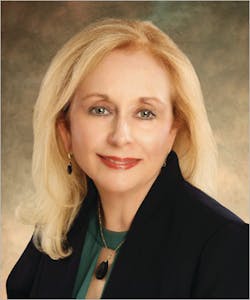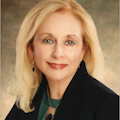Where is the dental community heading in 2020?
We are at a determining crossroads in the way that the dental community assumes its place in total health care.
I just returned from the May 2019 annual meeting of the American Academy of Oral Medicine (AAOM) in New Orleans, Louisiana. More than 20 countries were represented at the meeting, with presenters from all over the world. This was the beginning of the 75th anniversary of the organization. Many memories were shared by the members who have been affiliated with the AAOM since its early days.
The meeting’s theme this year was “Oral Medicine at the Crossroads of Interdisciplinary Healthcare.” Oral medicine encompasses many disciplines including not only dentistry but medicine as well. Along with these two main disciplines, there are many others that fall within medicine and dentistry. As the theme suggests, we are currently at the crossroads of patient care, and bringing the two together is even more profound today than at any other time in history. With so many specialty areas in the fields of dentistry and medicine, the scope of expertise is boundless.
You may be wondering, “What exactly is oral medicine?” The vision statement of the organization explains it well: “The AAOM integrates medicine and dentistry to promote optimal health.” Definitions by the AAOM fully define oral medicine as “the discipline of dentistry concerned with the oral health care of medically complex patients, including the diagnosis and management of medical conditions that affect the oral and maxillofacial region.” The complex connection of the oral tissues with systemic disease factors has become widely accepted.
I have been a member of the AAOM since 1997. During this time many changes have occurred; new members have joined and even more international involvement from so many countries has occurred. Connections in both Eastern and Western medicine have evolved, connecting the philosophy of both practices. Many academicians from major universities, both in the United States and from most countries worldwide, attend and speak at these annual meetings. The expertise in academics, research, and major organizations provide a wide field of knowledge and commitment to total health. For so long, the oral tissues were viewed as a separate entity from the rest of the body. Actual domains were claimed by the medical community and the dental community. As research has progressed, we now realize that there is no real separation, and that many systemic diseases affecting the entire body may have their early recognition in the oral tissues.
The program this year, being a major anniversary for the AAOM, focused on a relevant question: Where is the dental community heading in 2020? This is a simple question, but the answer requires a profound assessment of the path that must be taken to progress in a field of study. This applies not only to the practicing dentist, dental hygienist, researcher, and dental educator, but it also applies to the other fields of care that we interact with professionally. These fields are vast and ever-changing with new technology and science.
One of the presentations I attended at the AAOM annual meeting was given by Scott De Rossi, DMD, MBA, the dean and professor of the University of North Carolina Adams School of Dentistry, Chapel Hill, North Carolina. I have a strong connection to the university, because I was a faculty member for more than 10 years at its dental school. I also spent two years in a postdoctoral fellowship in the department of oral pathology. The curriculum in the pathology department had a strong focus not only on oral pathology, but also on what I believed was an oral medicine concept. I relate it to the Stomatology Center at my subsequent appointment at Baylor College of Dentistry Stomatology Center (now Texas A&M College of Dentistry in Dallas, Texas).
Dr. De Rossi spoke about the need to visualize the current trends and utilization of dentistry for the future, including social determinants of health within the dental curricula—income level, access to health care, education, living conditions, and work opportunities—that should be part of a total health assessment. He posed several questions for the audience: Do we have the needed flexibility, leadership, and ability to adapt? Can oral medicine fill a void in dentistry? Certain tasks historically performed in dental offices are now being incorporated into other venues such as Walmart, Walgreens, and CVS. Many corporations are adding procedures that are completed in one location—even some medical procedures with insurance coverage that have traditionally been performed only in medical and/or dental offices.
In summary, we need to be assessing how we can provide quality care in a society with ever-changing demographics and utilize an interdisciplinary approach with an interdisciplinary team of providers. We need to educate our students to practice and thrive in such a domain. What are our values, priorities, and options for care? How can the dental community incorporate some of the health-care functions that assist the patient during a dental visit and promote the total health concept? There are many functions that the dental provider could incorporate and manage in a total health concept while still working with other medical professionals. We have known for some time that the patient may see a dental provider more often than a medical provider. Therefore, disease states may be discovered at an early stage and treated more successfully during dental visits.
The AAOM has opened its doors during the past two years to a new program for affiliate members with an option to obtain academic affiliate fellowship (AFAAOM). Details and requirements are listed at their website, aaom.com. I have had the privilege to chair this committee along with my cochair, Michelle Baxter, who is a nurse practitioner and assistant professor at the University of Louisville. The Academic Affiliate Fellowship Program is open to those with an interest in oral medicine who hold a professional license, such as dental hygiene, nursing, etc., and those who work in academia, oral medicine clinics, research facilities, and dental practices. The affiliate membership has continued to increase with multiple dental hygienists, nurses, and other licensed professionals in health-care facilities joining as members. And, of course, as an option, some select to become academic affiliate fellows, but this is purely optional.
I am always amazed at the quality of the speakers, the wide range of topics, and the expertise of those involved in committees who select the group of speakers each year for the AAOM annual meeting. Key presentations, abstract presentations, poster sessions, networking, and committee involvement are all part of the activities during the four-day event. I highly recommend the meeting to anyone with an interest in total health and oral medicine. What a great opportunity for dental hygienists to broaden their field of knowledge and meet professionals from all over the world.
As the 2019 theme suggests, we are at a determining crossroads in the way that the dental community assumes its place in total health care. Dental hygienists play a key role in early detection, oral health care, and total health for all patients. The world, demographics, and health care continue to change, and we must be able to do so as well.
For more information on the academic affiliate fellowship and membership in the AAOM, please go to the following websites:
- The American Academy of Oral Medicine: Academic Affiliate Fellow, https://bit.ly/2M80ILx
For more information on cultural, linguistic, and health literacy topics, go to the following websites:
- US Department of Health and Human Services, Office of Minority Health: National Standards for Culturally and Linguistically Appropriate Services (CLAS), https://bit.ly/2mzVL29
- US Department of Health and Human Services, Think Cultural Health: A Physician’s Practical Guide to Culturally Competent Care, https://bit.ly/1laQoPu
- Health Resources & Services Administration: Culture, Language, and Health Literacy Resources, https://bit.ly/2O0YIqJ
About the Author
Nancy W. Burkhart, EdD, MEd, BSDH, AAFAAOM
NANCY W. BURKHART, EdD, MEd, BSDH, AAFAAOM, is an adjunct professor in the Department of Periodontics-Stomatology, College of Dentistry, Texas A&M University, Dallas, Texas. She is founder and cohost of the International Oral Lichen Planus Support Group (dentistry.tamhsc.edu/olp/) and coauthor of General and Oral Pathology for the Dental Hygienist, now in its third edition. Dr. Burkhart is an academic affiliate fellow with the American Academy of Oral Medicine, where she also serves as chair of the Affiliate Fellowship Program Committee. She was awarded the Dental Professional of the Year in 2017 through the International Pemphigus and Pemphigoid Foundation, and she is a 2017 Sunstar/RDH Award of Distinction recipient. Her professional interests are in the areas of oral medicine and the relationship between oral and whole-body health, with a focus on mucosal disease and early oral cancer detection. Contact her at [email protected].


